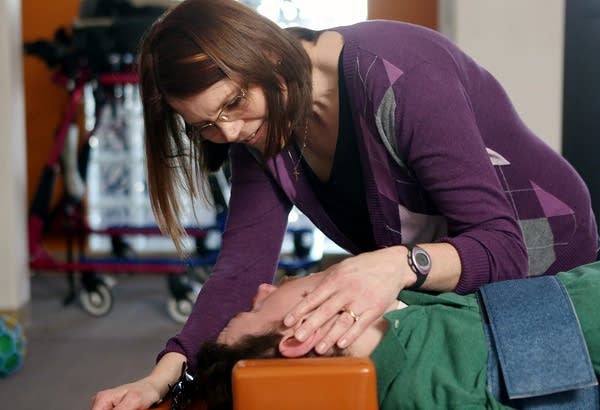Re-tooled disability funding breeds anxiety

Go Deeper.
Create an account or log in to save stories.
Like this?
Thanks for liking this story! We have added it to a list of your favorite stories.
Minnesota is starting to overhaul its system for determining how to direct $1.7 billion toward caring for people with disabilities so they can live more independently.
For many years, calculating those rates for the home- and community-based waiver programs has been the task of Minnesota's counties. But that led to a patchwork system with 87 different ways for setting rates, said Loren Colman, assistant commissioner of the state Department of Human Services. He said some providers were paid more than others, depending on where the recipient lived.
"That's the root of the problem — that there has not been a uniform way to look at the needs of the individual and calculate what are the costs associated with providing those services," Colman said.

In 2007, those inconsistencies prompted the federal government, which provides half of the funding, to deem Minnesota out of compliance with federal regulations. The Centers for Medicare and Medicaid Services required the state to move from a county-based system to a statewide one.
Turn Up Your Support
MPR News helps you turn down the noise and build shared understanding. Turn up your support for this public resource and keep trusted journalism accessible to all.
Minnesota's new rate-setting tool debuted Jan. 1. But as the changes unfold, group homes and other providers that offer alternatives to places like nursing homes for 34,000 Minnesotans are struggling to come to terms with the proposed levels of funding. So are families.
State officials promise that there won't be changes to overall funding. But providers and their clients are gradually learning whether their individual rates are projected to go up or down. In the Twin Cities metro area, some providers say the vast majority of changes they're seeing suggest the payments will be going down.
Jill Steeves of Minneapolis recently discovered her 23-year-old son, David, would see up to a third less funding for group-home and day-training programs.

"I've been told by a person at DHS that even though they're going to be taking money from my son, it's not going to affect his care," Steeves said. "I just do not agree with that. They're just not realistic."
Advocates for people with disabilities say in their world, rates equal services, so lower rates would mean fewer services.
For Steeves, whose son was born prematurely at 2.5 pounds and has struggled with severe developmental problems ever since, that could mean going from having him go to a day program five days a week, to two.
"He has significant issues," she said. "He can't sit up by himself, he can't walk. He has three words, which are wonderful words: He says, 'Hi." He says, "Happy." And he says, 'Mom.'"

At his day program in Vadnais Heights, David's friend Jenny and the support staff try to warm him up to talk. David smiles in a wheelchair, and a supervisor holds his hand to help him glue pieces of paper for an art project.
Steeves said she chose the program run by Merrick Inc. because of its high-quality care. But administrators there told her that if the state proceeds with its proposed cuts, David will probably need to scale back on his visits to the center.
"And I'm not going to live forever. I need to know now that he's in a good place, getting good care," Steeves said. "But if they continue to cut his funding, I can't be guaranteed that's going to be the case for the rest of his life."
Although the new system has already debuted, the state agreed to hold off on any significant changes to payments until 2019. DHS officials say that will give the state time to collect data, adjust the funding formulas, and correct any unintended consequences.
But Craig Wieber, chief fiscal analyst for ARRM, an advocacy group for group homes and other providers, said the state didn't anticipate the level of trepidation that the changes would bring. He said if the cuts stand in five years, some providers would go out of business or have to discharge clients.
"Our preference would be, 'Let's get as much right on the front end as we can. Let's reduce that level of anxiety,'" Wieber said. "The old system, for all of its bad aspects, we knew it served everybody in the system at the time. It provided enough rates and enough services that everyone got their needs met. The new system, we don't know that."
Lynn Noren, president of Rise, Inc., a nonprofit that offers day services and other programs for people with disabilities, said implementing the new system has been a challenge. It's likely that there were errors in the funding formula that are producing incorrect payment rates, she said.
Noren, who was part of part of a coalition of providers that worked with the state to develop the new system, said a rushed rollout has suffered from glitches and inadequate training. That has spread to confusion among providers and counties, which are still involved with assessing the clients' needs, she said.
But Noren is confident the problems will be resolved over the next five years. Her work begins this afternoon, when Noren will testify on the issue before the Senate's Health, Human Services and Housing Committee.





